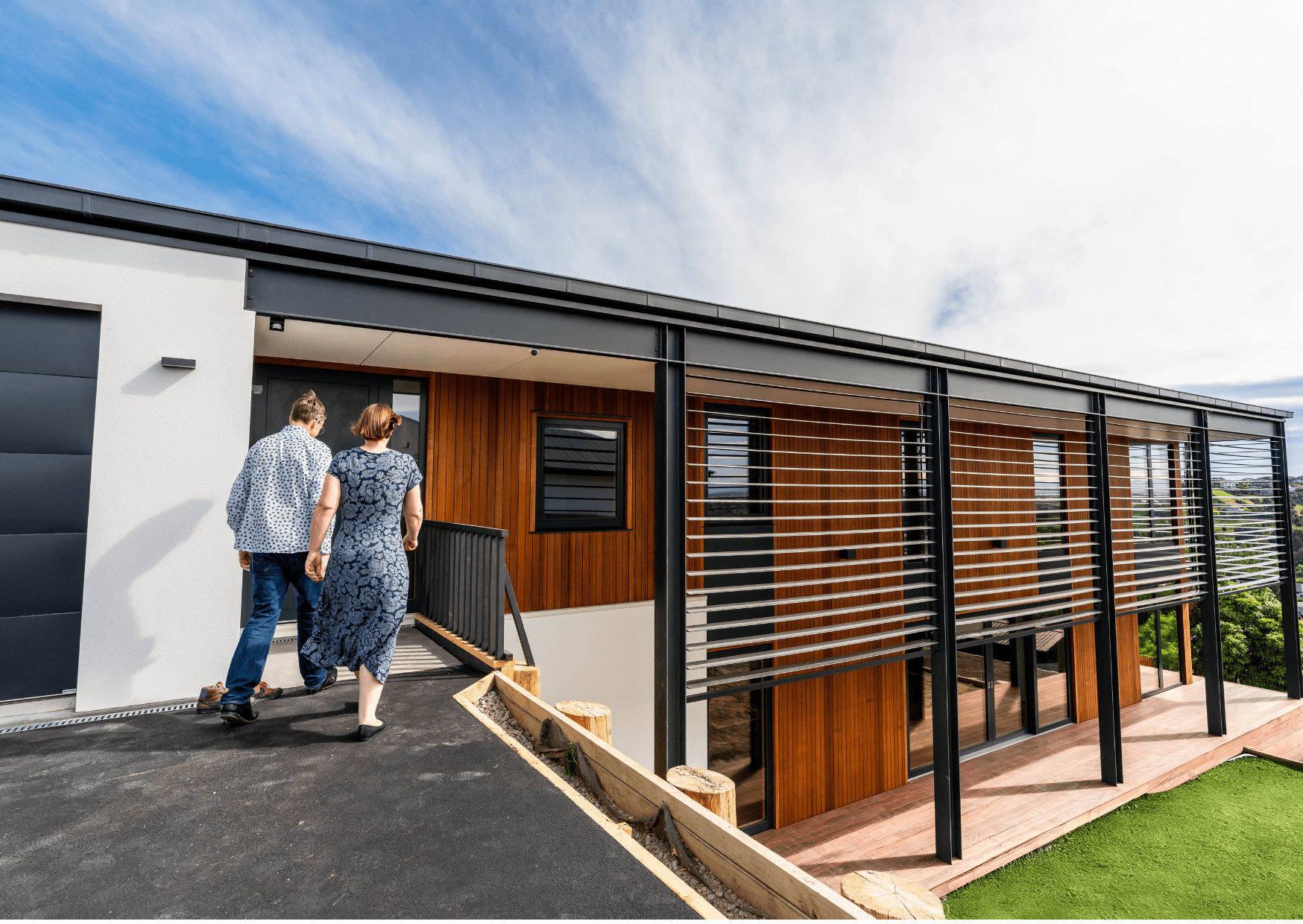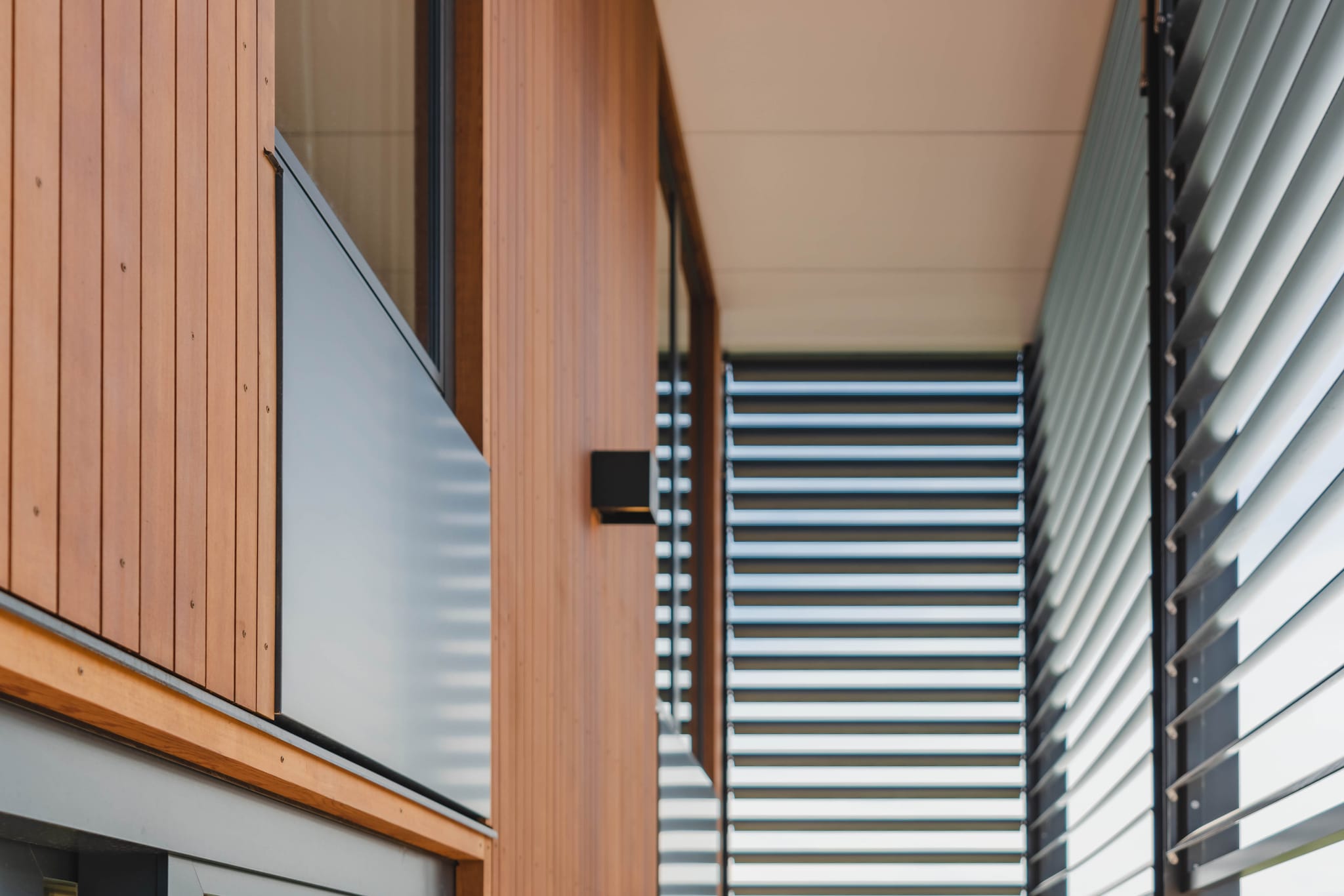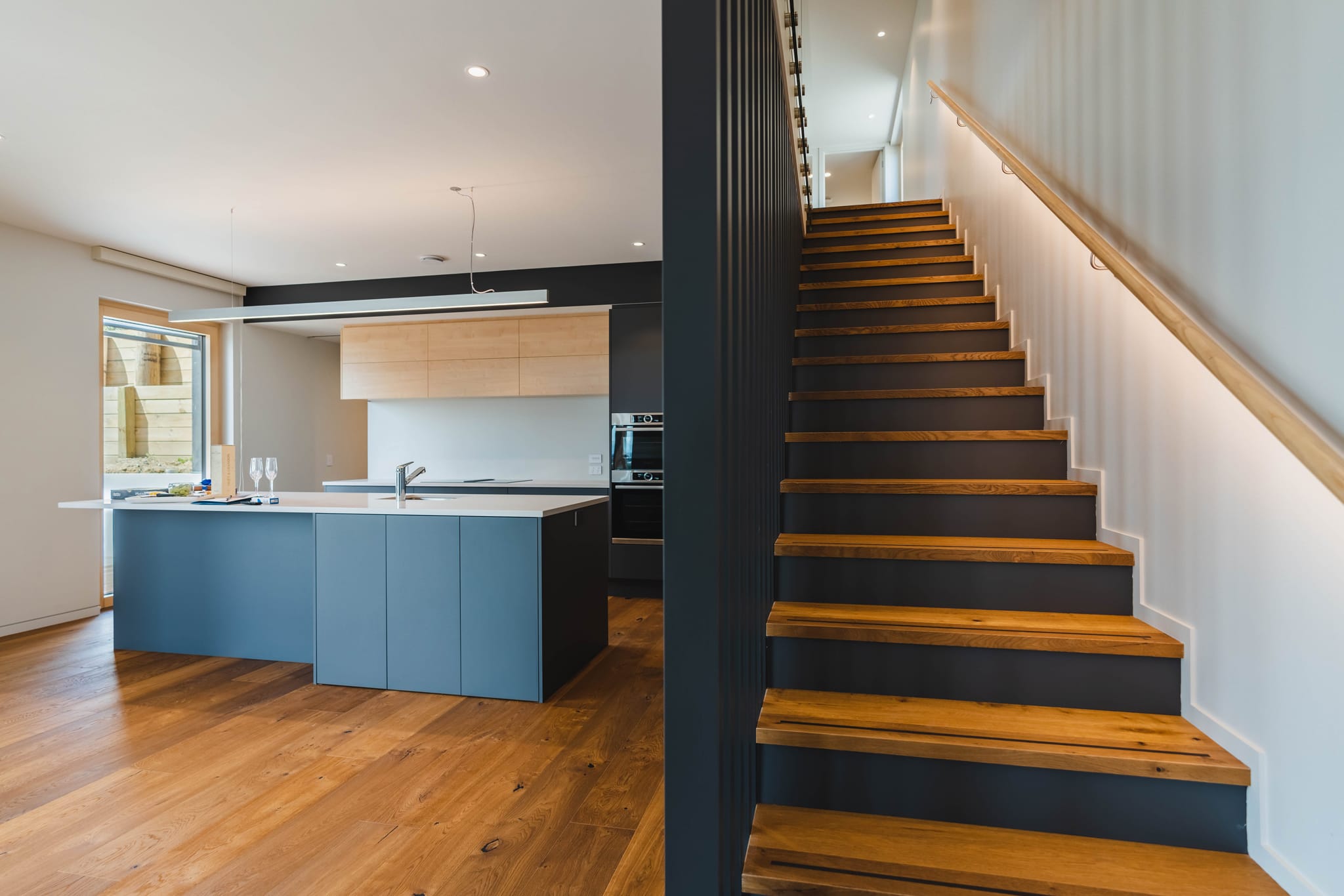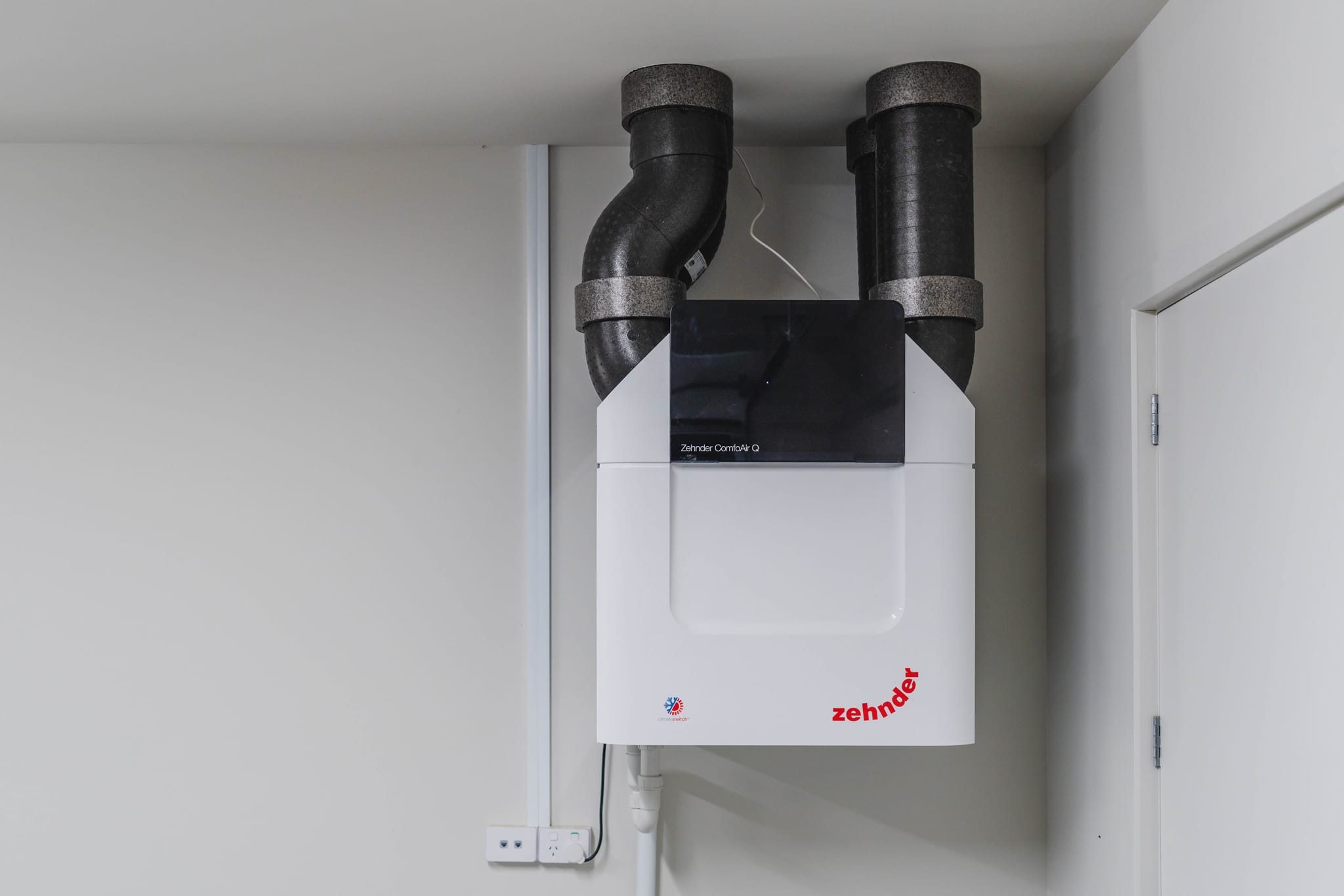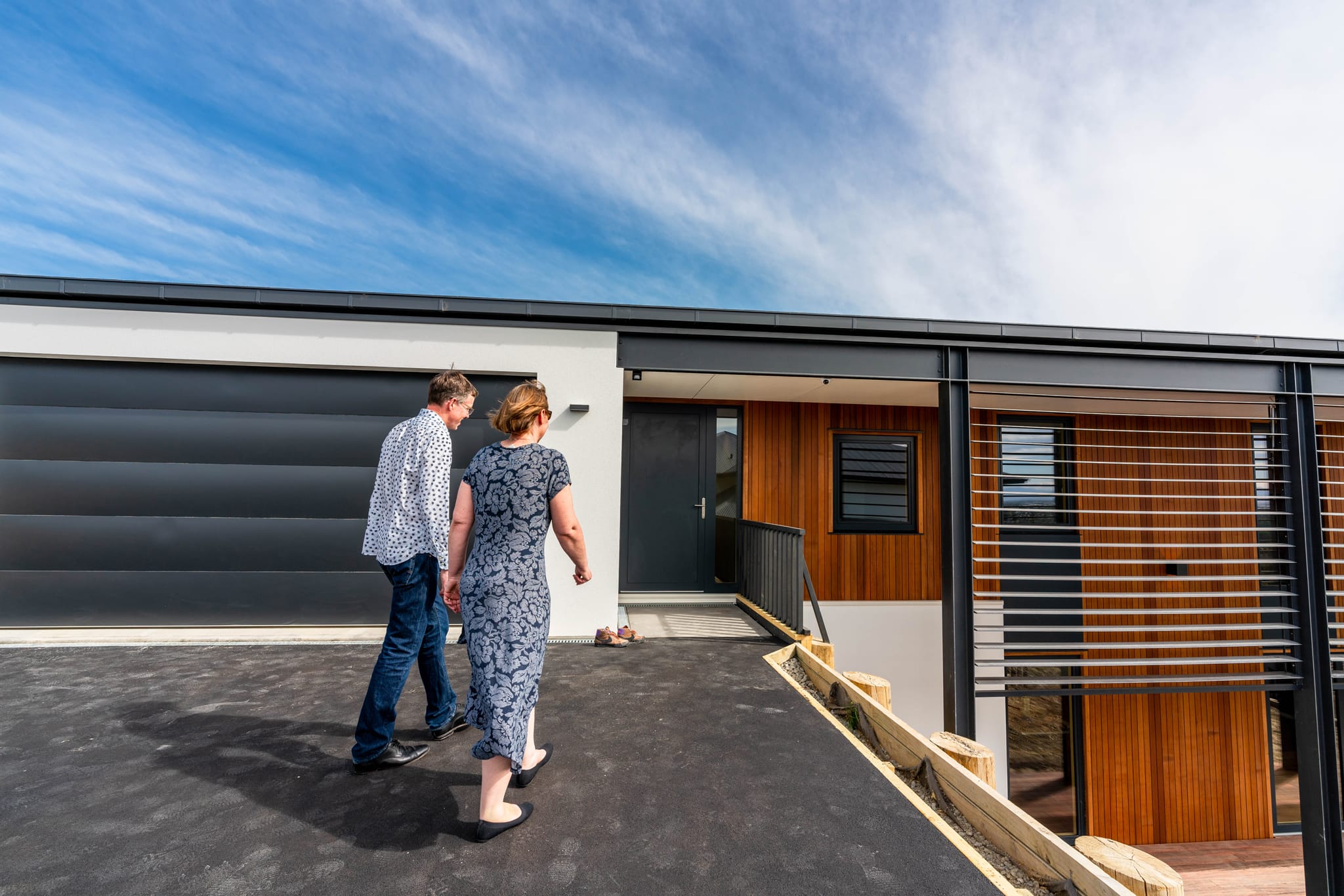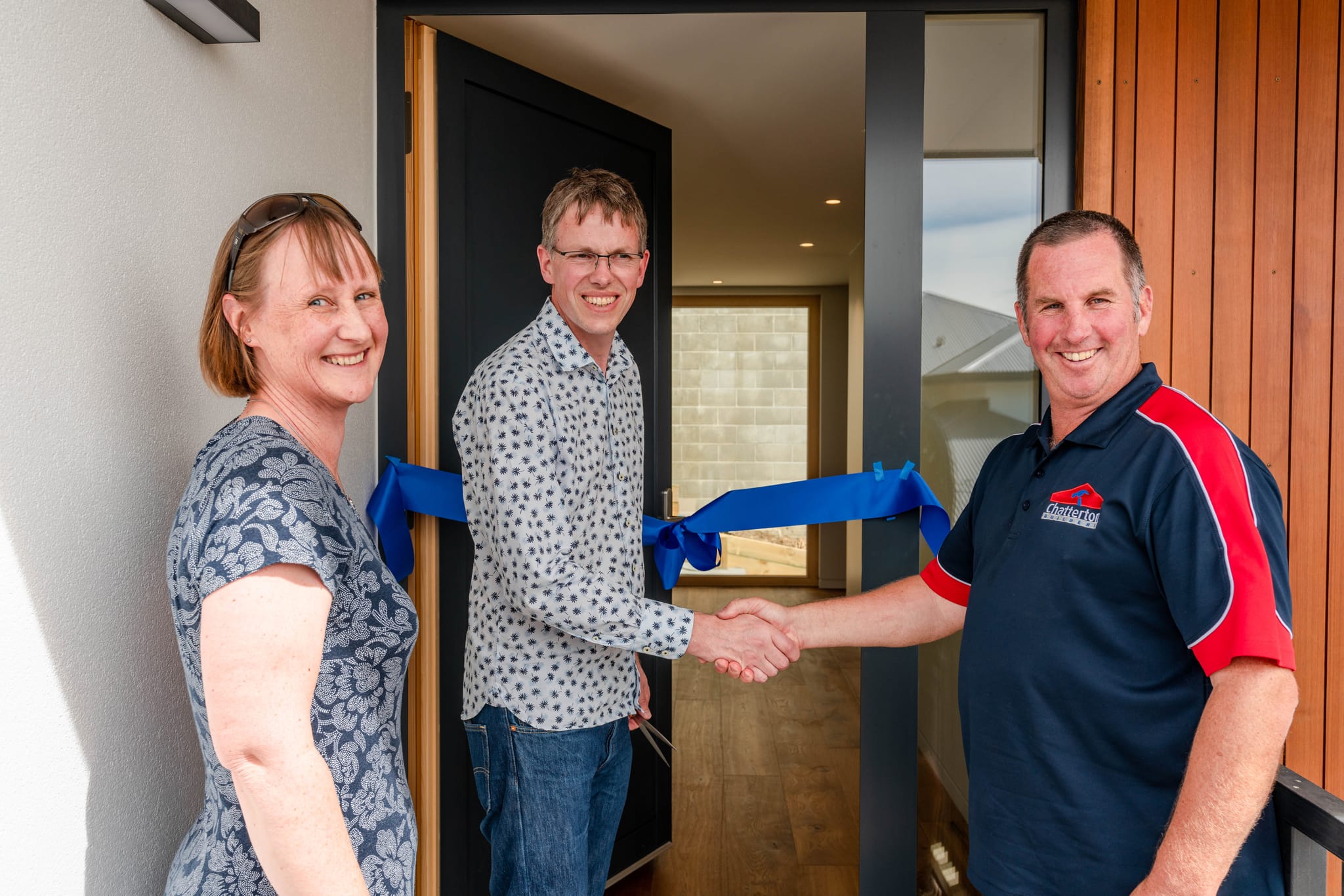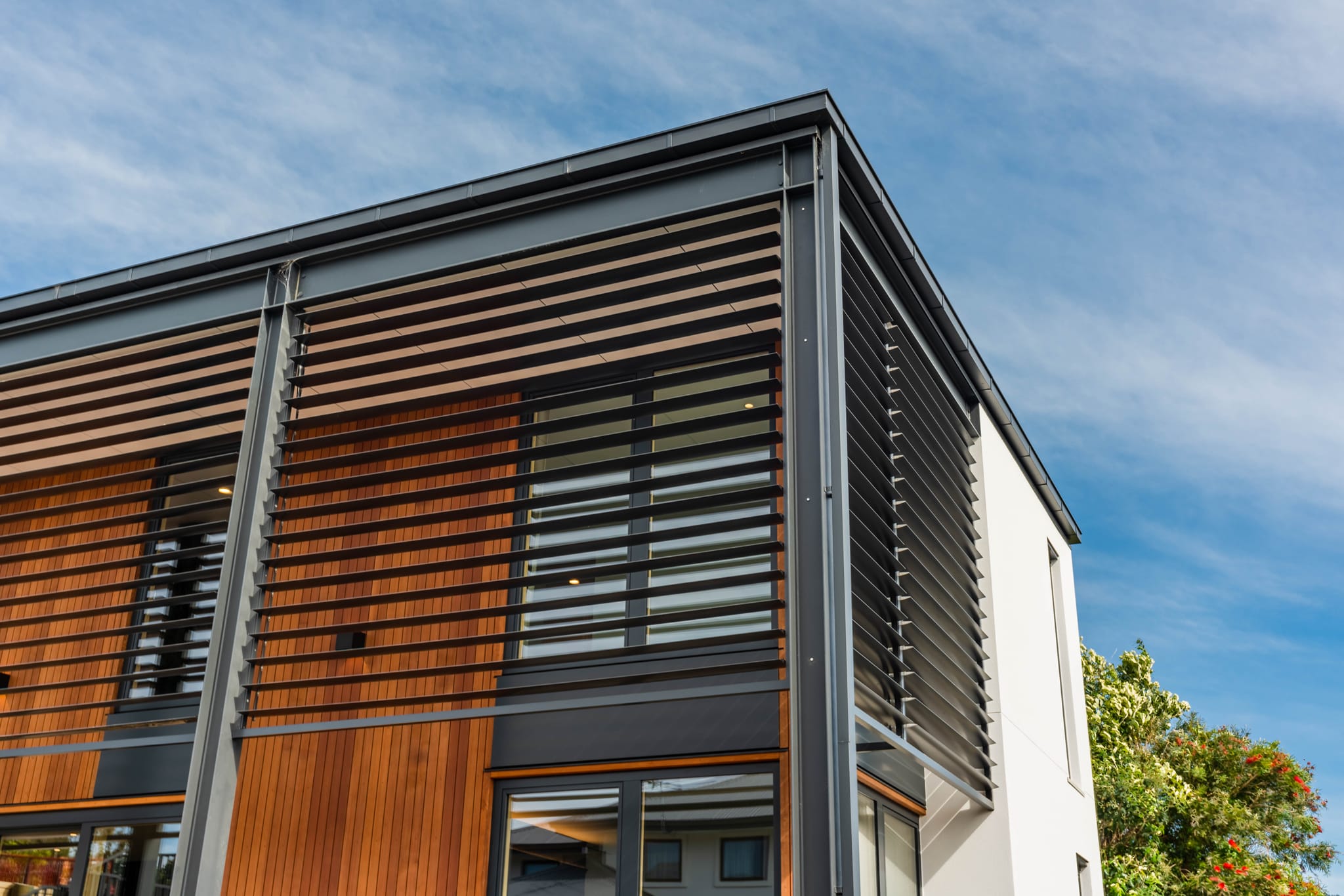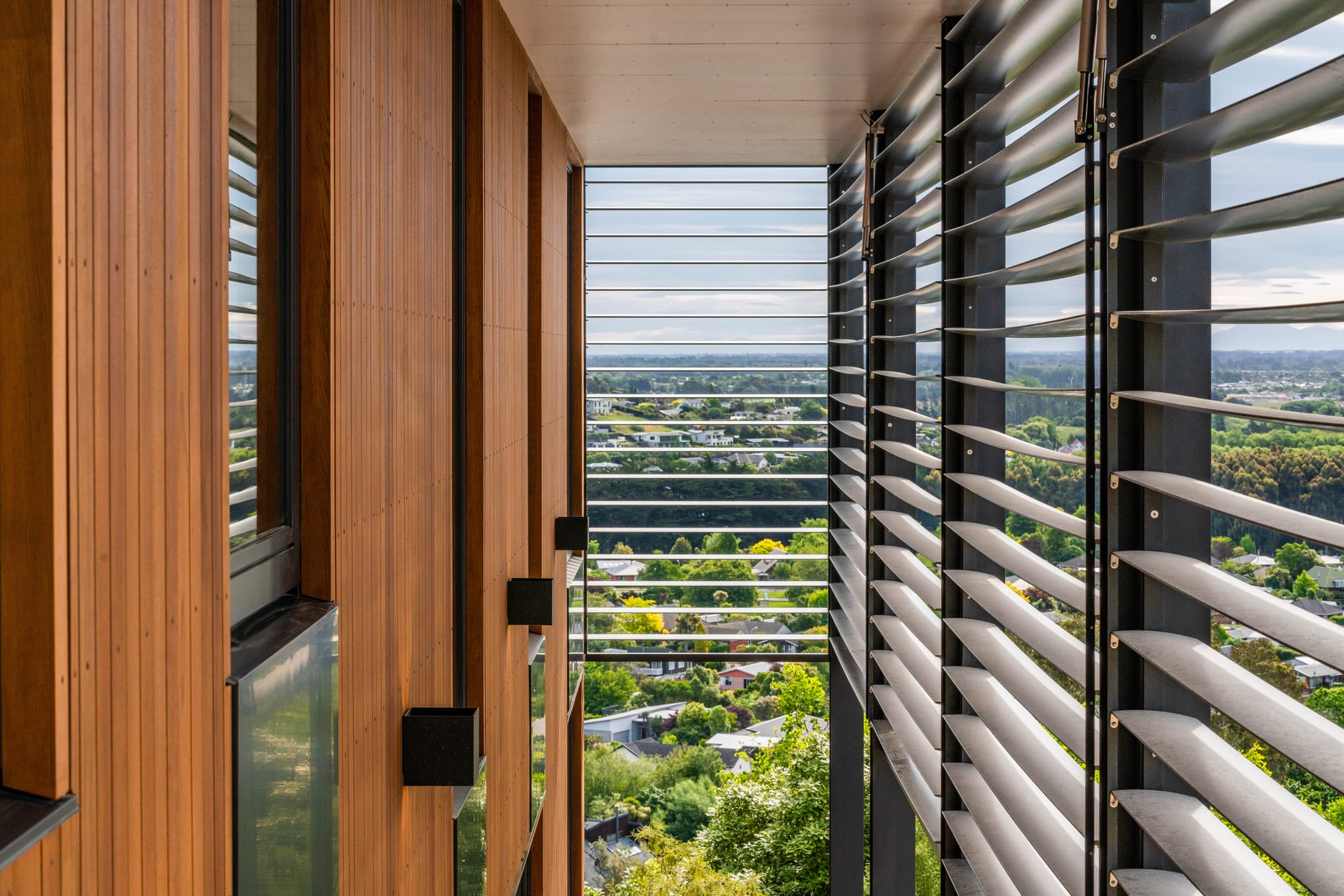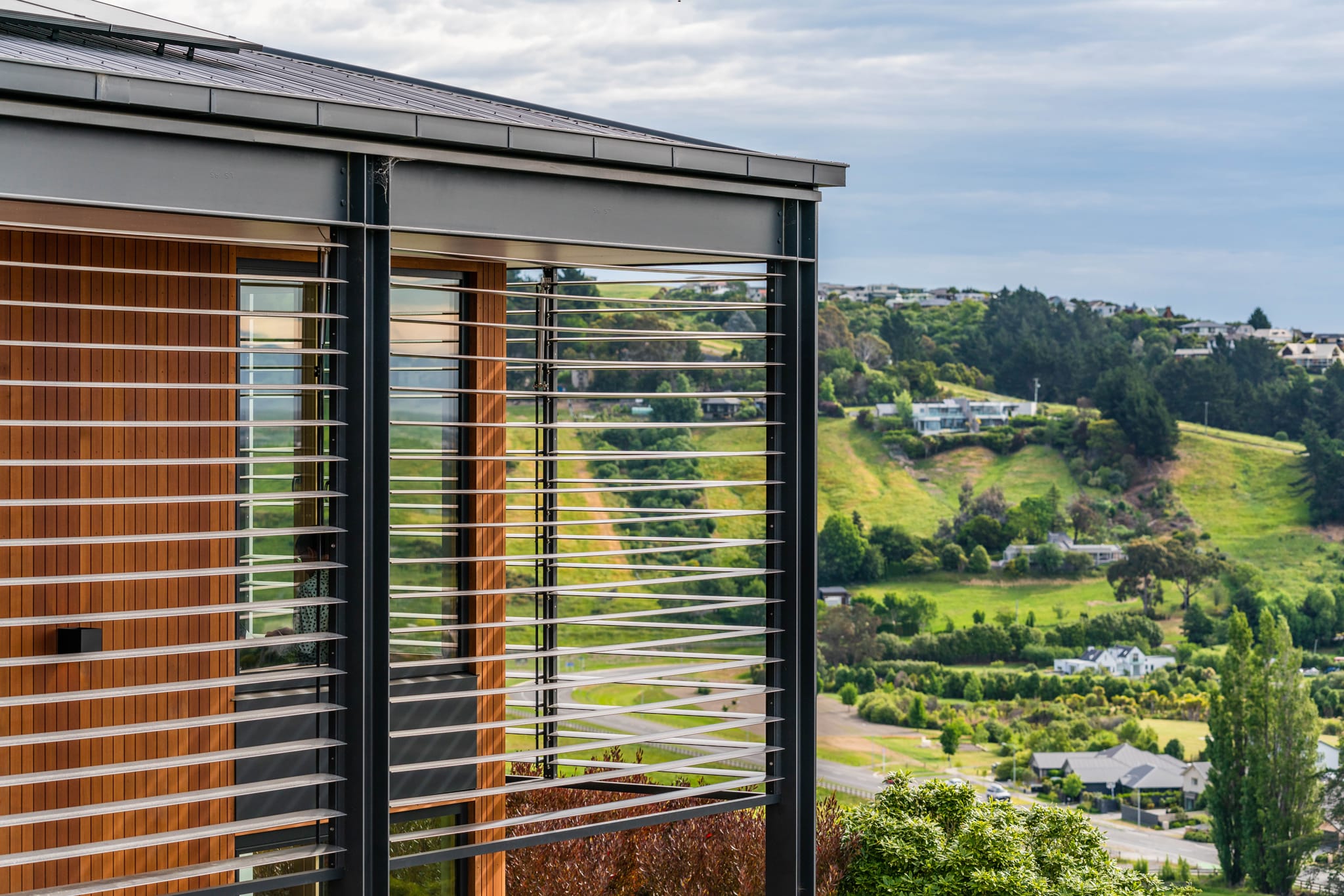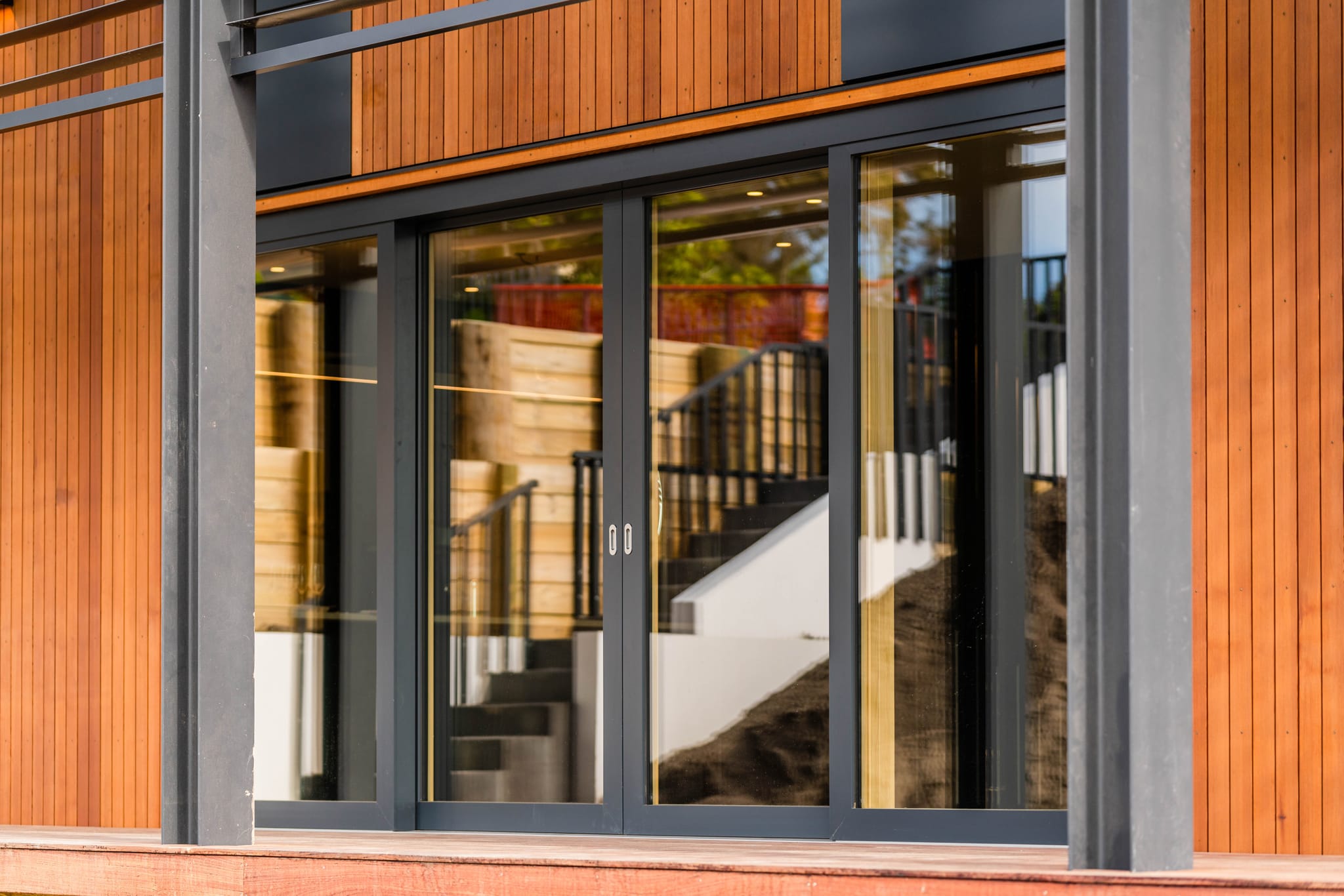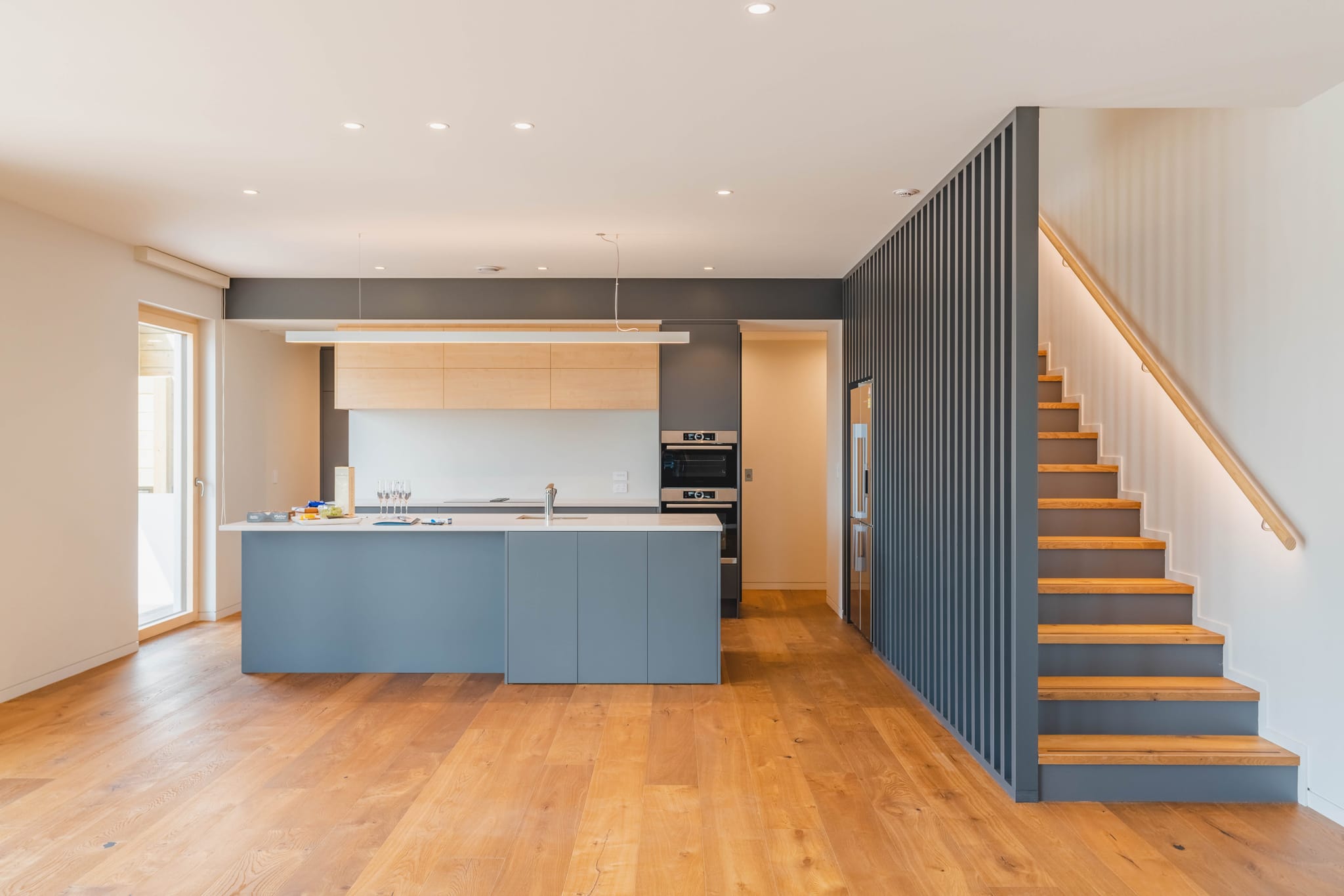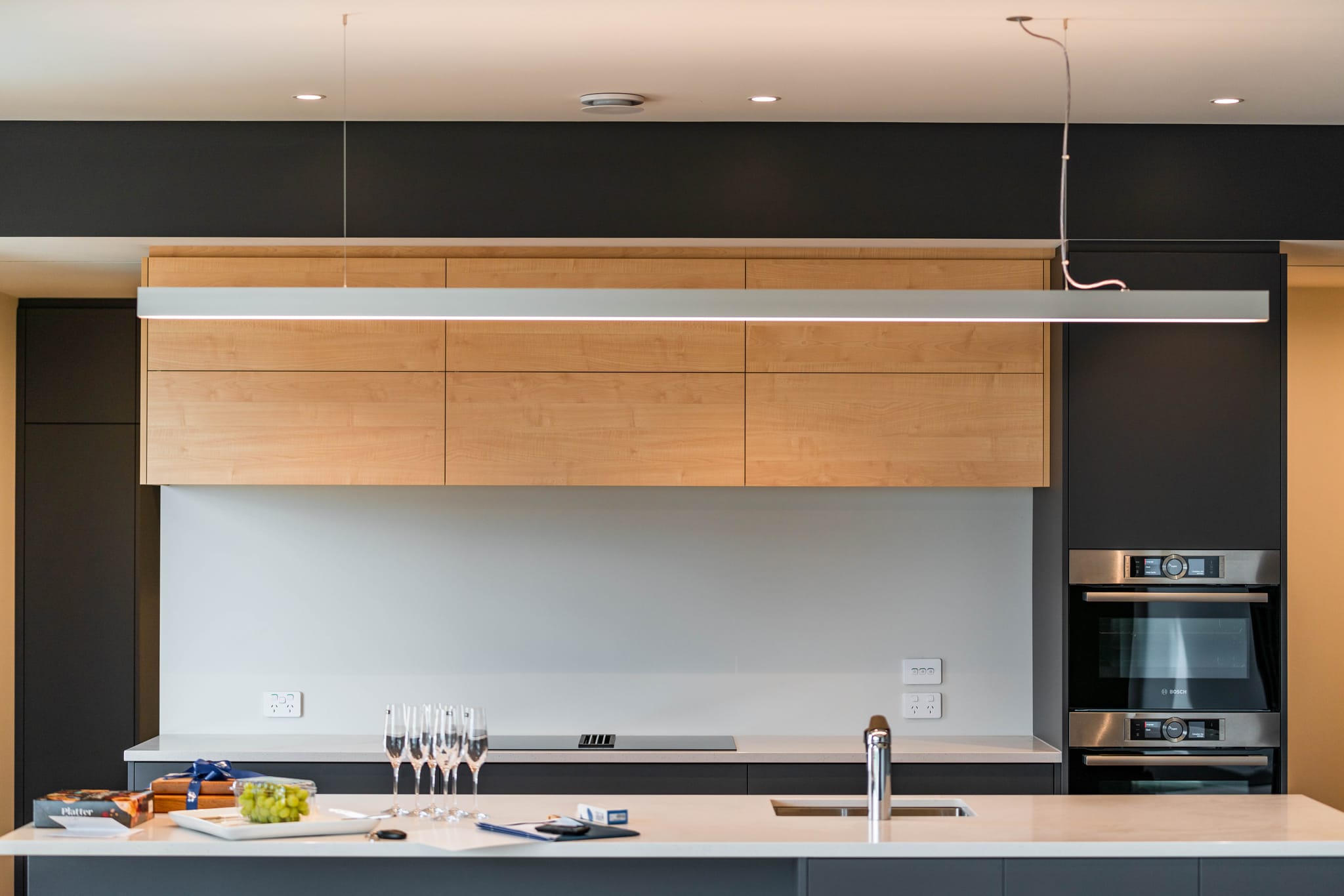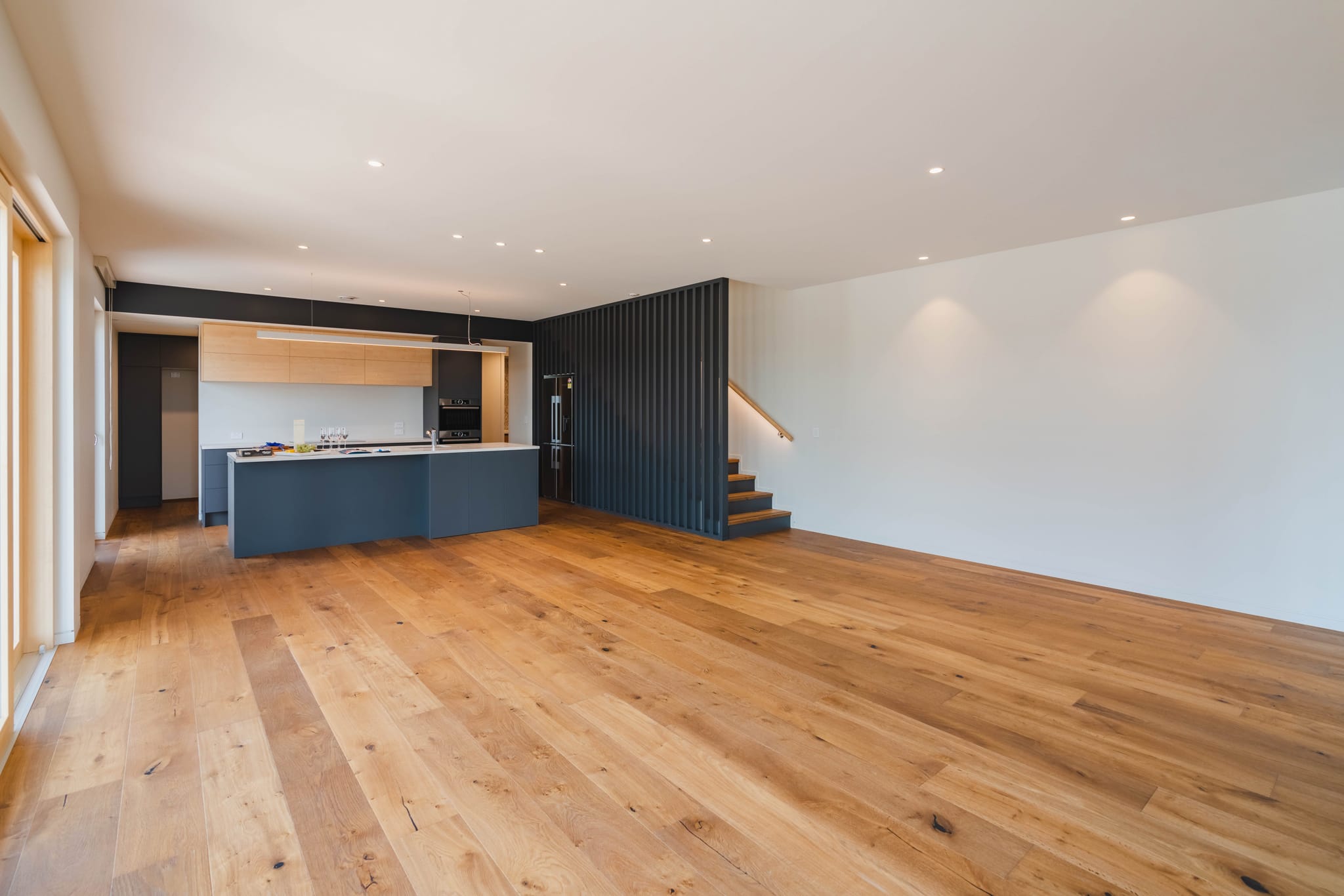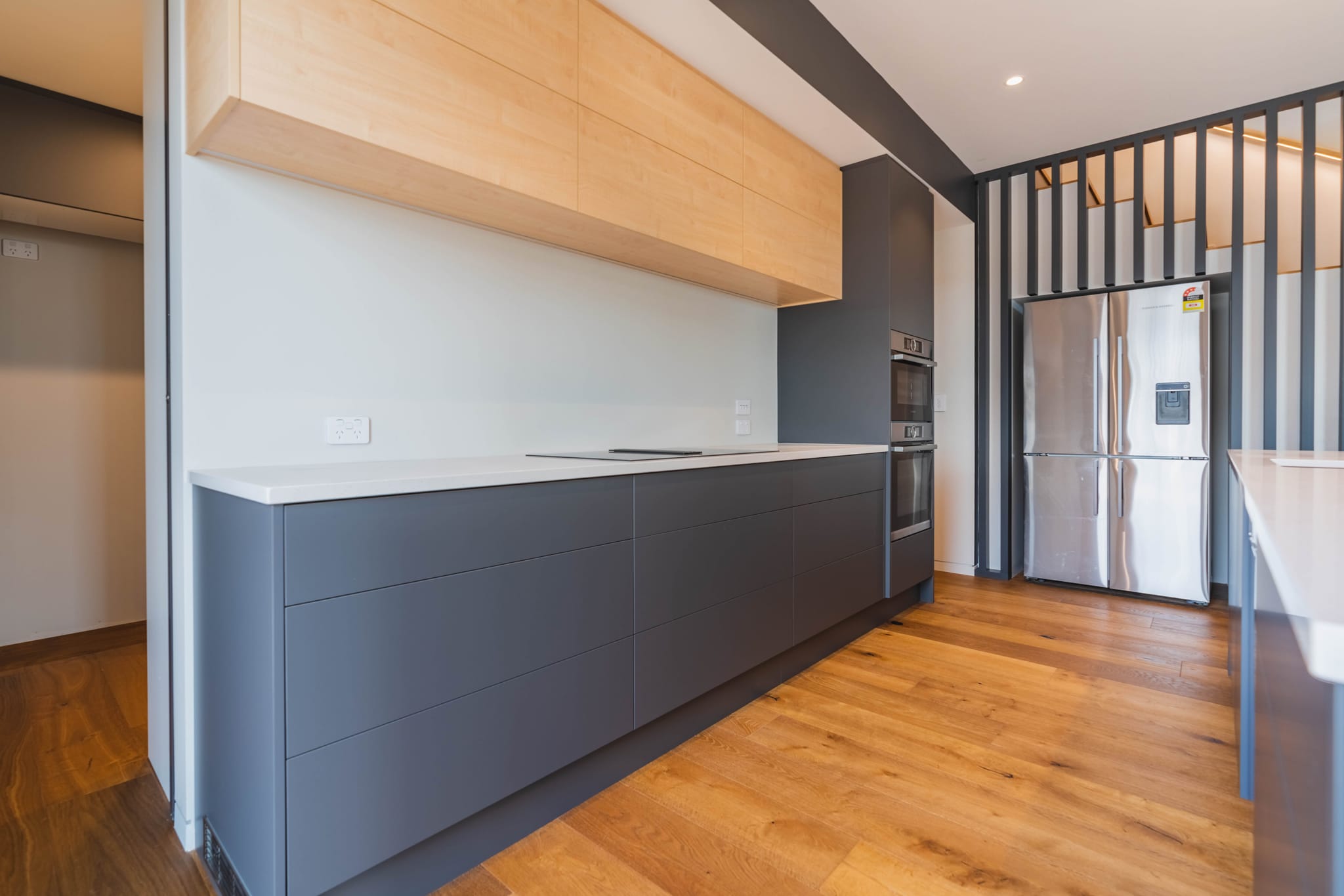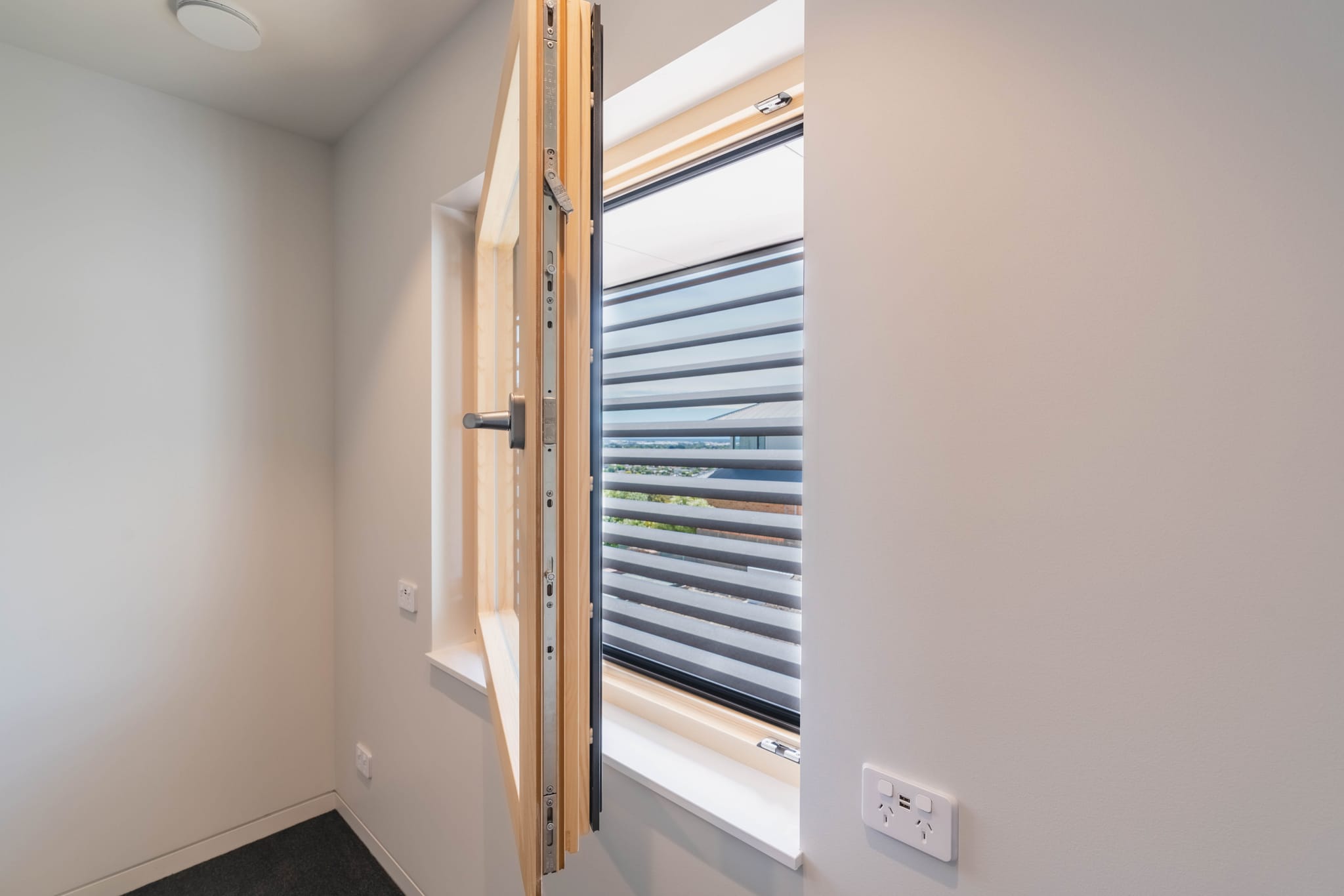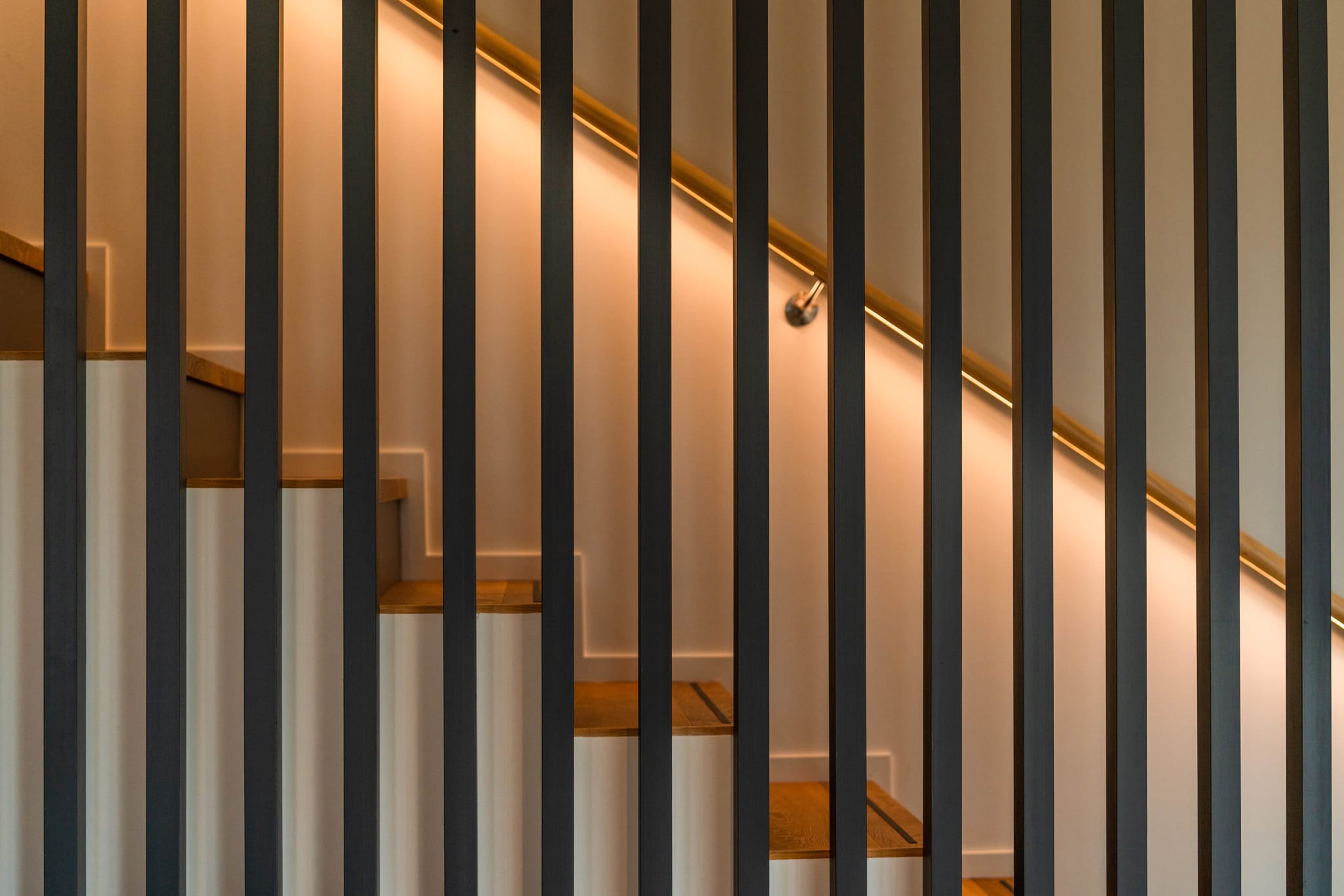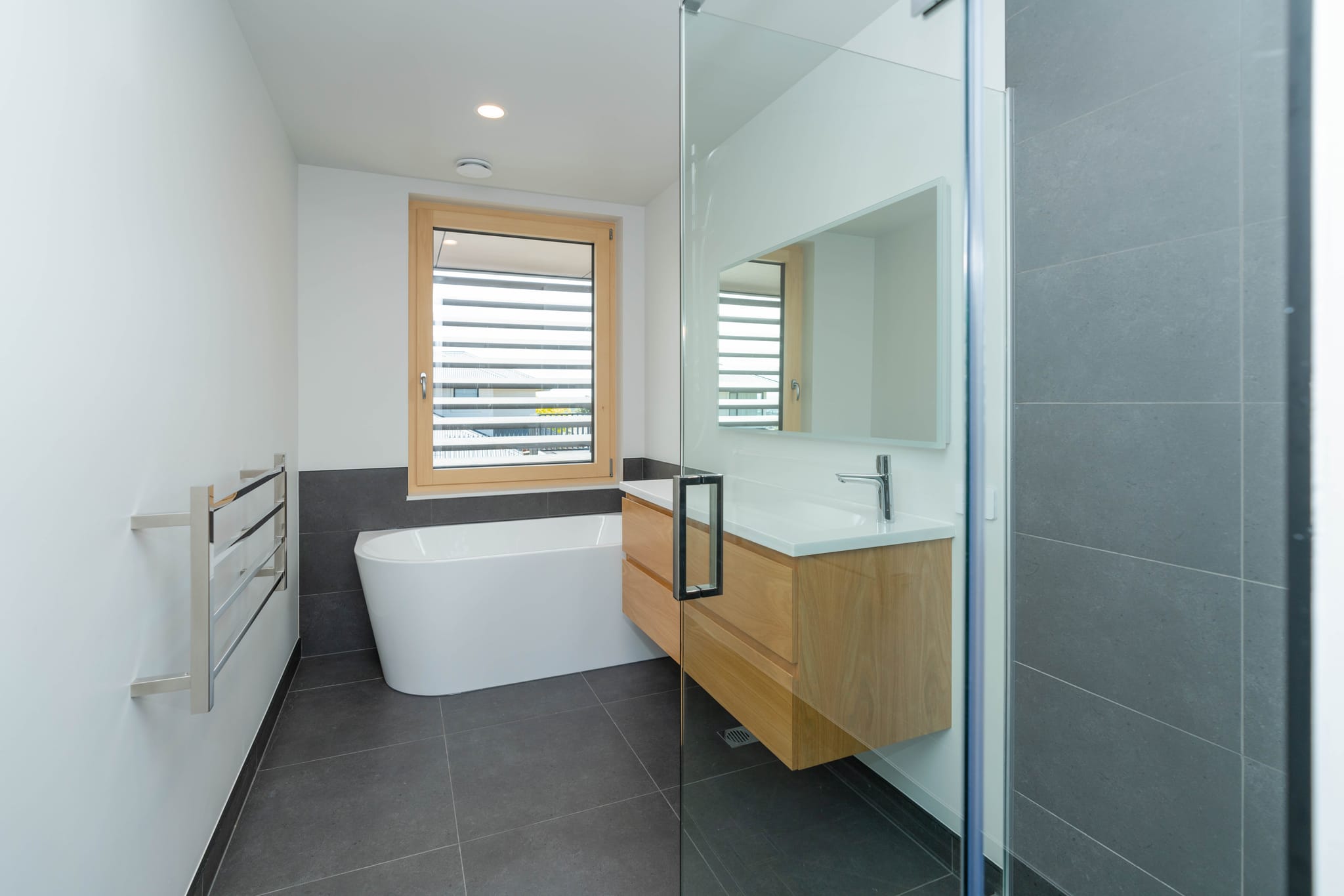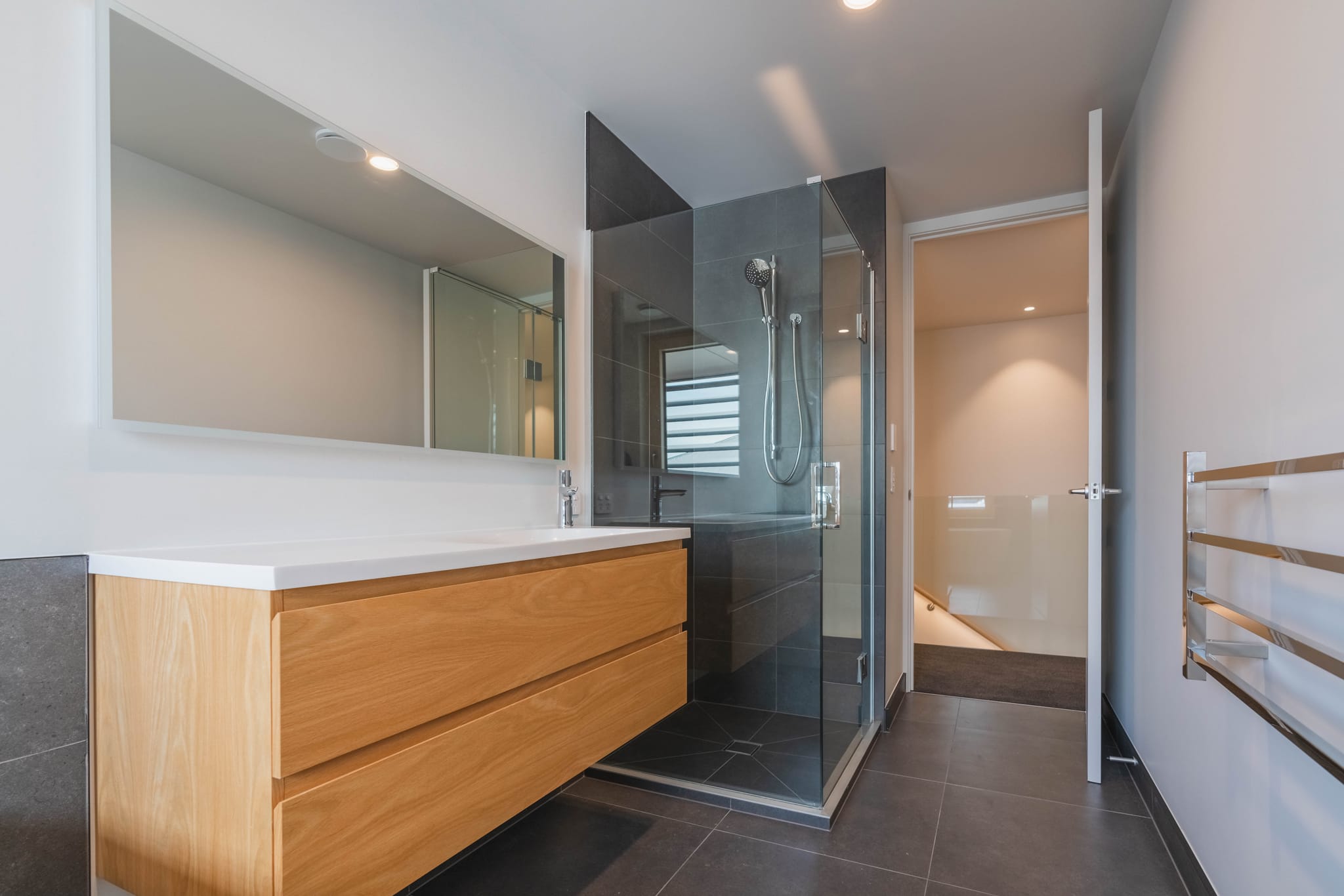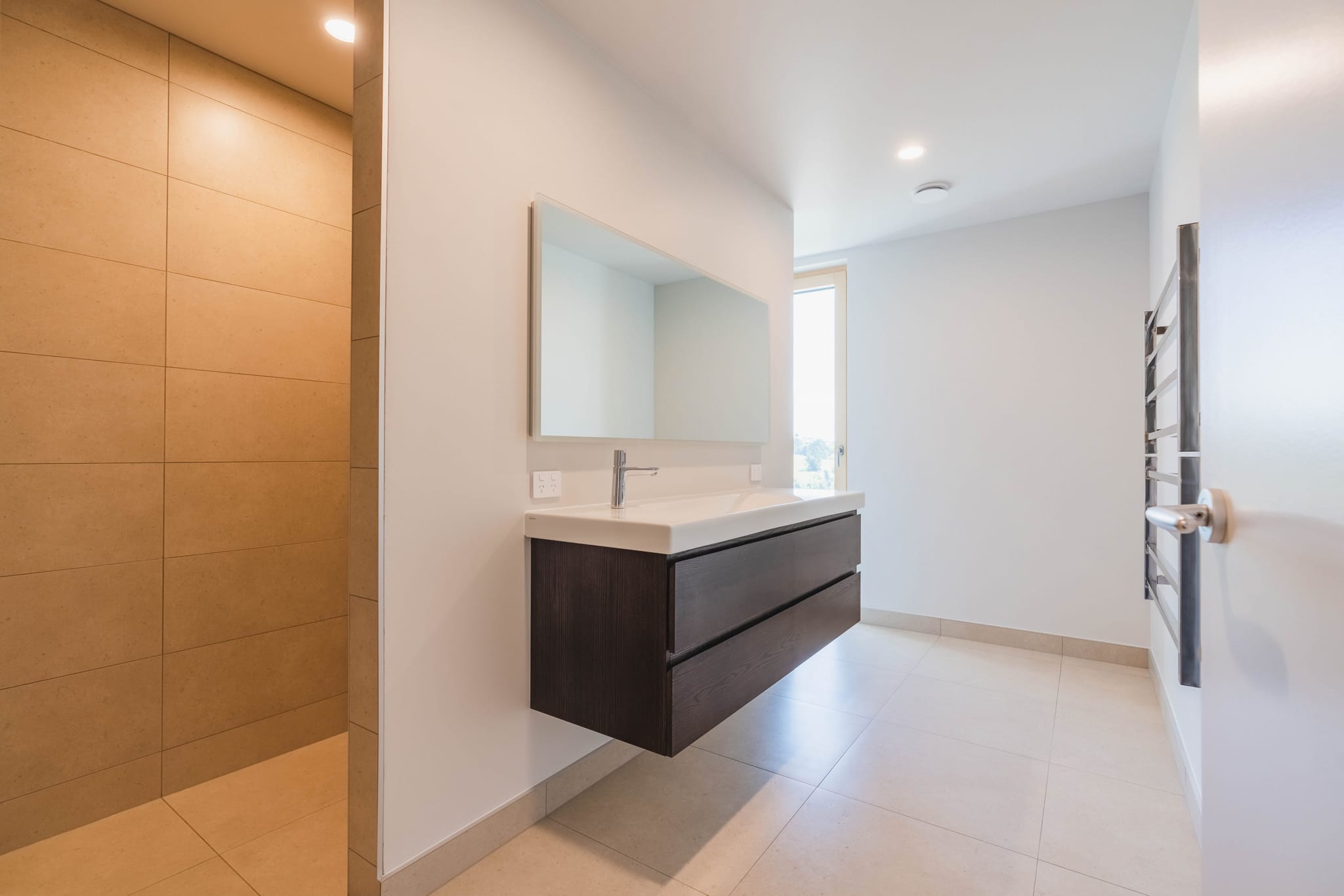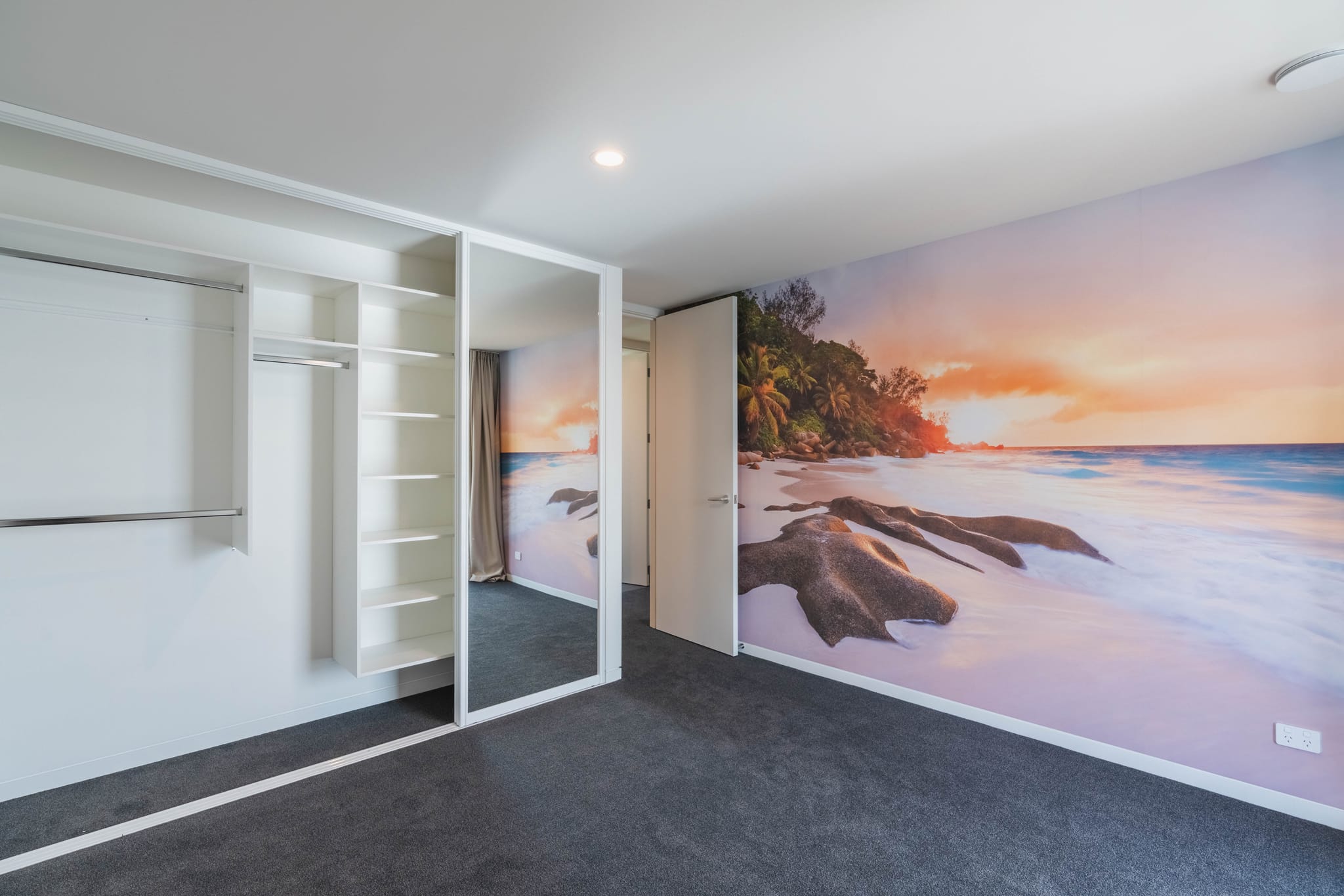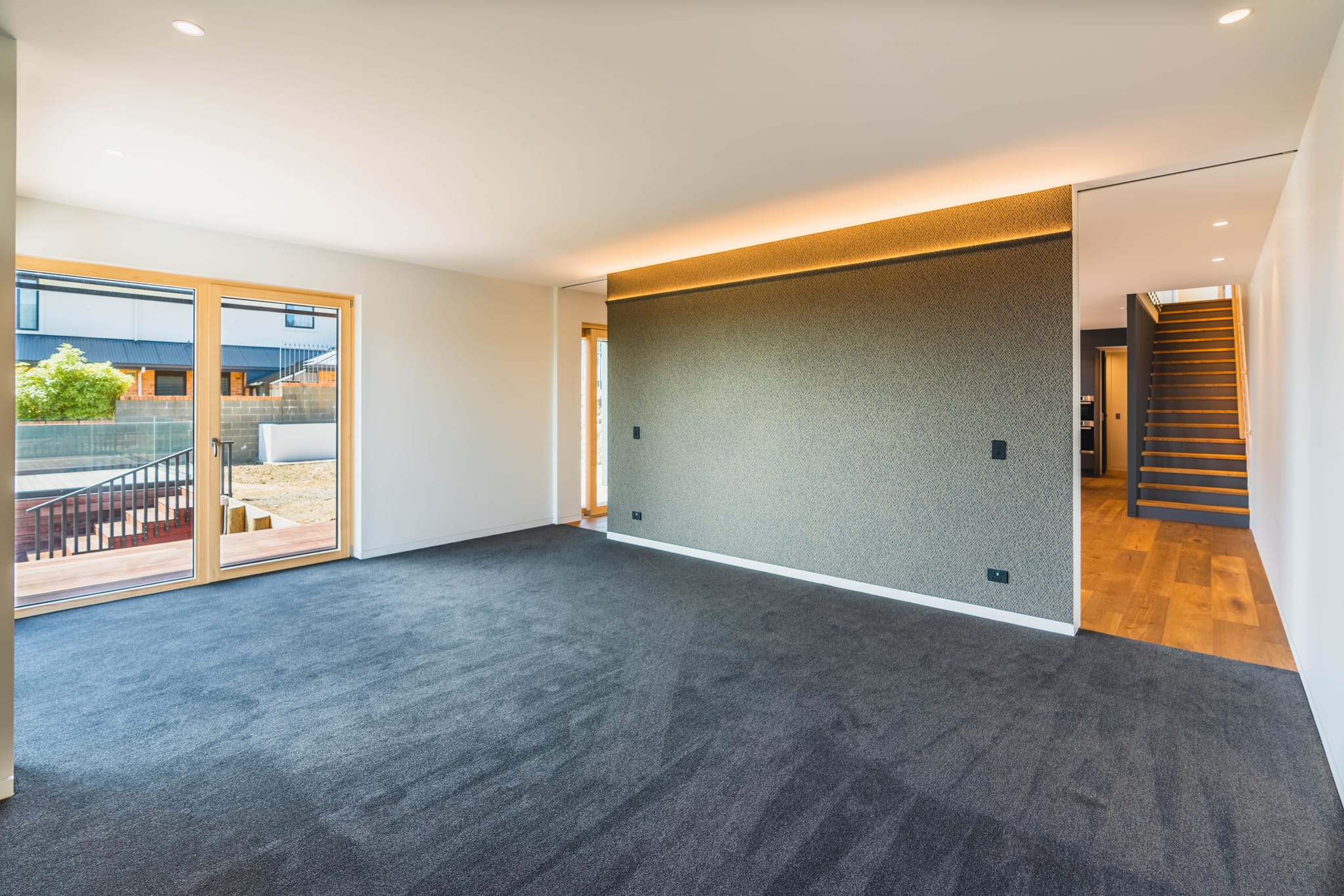This architectural SIPs home has been designed to passive house principles.
“We have been in our passive house for 3 years. The calmness and stillness are amazing. It’s calm, quiet, relaxed. It feels light and fresh and never feels heavy or smells funky.
At work we have a heat pump going all day and there is the constant humming. You get home and you just immediately relax and feel calm. It is so peaceful and it’s hard to explain the calmness of these homes – you need to experience it. It’s quite something.
We absolutely get a great night’s sleep. It is particularly noticeable in the winter or summer. No restless nights or disturbed sleep. This could be because there is no heaviness to the air, or stuffiness. The temperature is comfortable and uniform- no hot stuffy nights. Plus, it is so quiet – there is no background noise.
Our clothes and furniture are always dry and smell fresh, no mustiness from humidity or moisture. We often said the most undersold feature is the laundry. We hang clothes on the rack in the laundry and it is dry that day. We sold our dryer as we have no need for it, even in the winter. Sounds strange, but my books also feel dry. There is no dampness.
Anecdotally, we feel that when anyone is sick it does not spread as much as it used to – probably as a result of the (heat recovery) ventilation system and constant replacement of the indoor air with fresh filtered air. My hay fever, it’s fine at home but about halfway to work the symptoms start and I have to take a tablet. Unless I leave home, I don’t notice it.
Practically, living in the house is so easy. The big thing for us is the uniform temperatures throughout the whole home all the time – with little to no heating and not having to have layers of clothing.
In winter 2023, we used one 1.4kw panel heater, and in winter 2024 we had a minor upgrade to our heat exchanger and further reduced the power used for heating.
Traditionally, in New Zealand in winter, we ‘live’ in the living areas and shut the doors to the bedrooms and hallway. Everyone lives on top of each other and puts up with the noise. Conversely, in our home, we now find the kids are able to take themselves to their rooms to do their homework away from the noise and be comfortable. You can’t put a price on the ability to do this.
I often work late at night and now I can go to my office to work in a productive environment undisturbed and not interfere with my families evening, while being just as comfortable as I would be in the lounge.
Surfaces are the same temperature as the air so, for example, the tiles are not cold to walk on in the night.
We used to have a log burner. We had to chop the kindling, get the logs in, light the fire…. Now all that nonsense is gone and there is less ‘admin’ that we are subjecting ourselves too, especially when coming home at the end of the day it’s a real load off!
When we were designing the home, we questioned whether an inside temperature of 200C was enough. It is bang on. We are comfortable and can walk around in a t-shirt all year. This, we know, is due to the air being dry so it heats easier, but I suspect the fact that the air and surfaces are all the same uniform temperature also makes it feel more comfortable.
Conversely, if it’s 220C the dry heat does not feel stuffy – it is still comfortable. If it gets too hot, we just open a window or turn up the ventilation (MHRV) settings. For example, when we had three families for dinner, we put the MHRV system into ‘party mode’ and it managed the temperature, and it stayed the same all night.
If we are away on holiday over winter, our monitoring shows that the internal temperature may drop to 180C with no one living there but it remains static after that. It does not take much body heat and appliance use to bring it up those 20C when we return.
We put in monitoring equipment – more as an interest factor. We were sure the house was working because it’s so comfortable, but it is good to have data to back up our thoughts on how efficient the house is”.
The owners decided not to go through PHPP testing but this did not stop them investing in the performance elements to achieve high performance and create a healthy comfortable home. This home required significant attention to detail, and careful planning and execution of the construction to ensure neither performance nor quality were compromised.
The owners had completed a lot of research culminating in the decision to design & build to passive house principles. Their science background enabled them to understand the principles and science behind it.
Formance SIPs panels have been used over the two storeys and taped and sealed to provide a highly insulating thermal and airtight environment. Imported triple glazed timber windows arguably offer superior performance to uPVC (for a bigger investment). A Zehnder mechanical heat recovery ventilation system has also been installed. Large exterior louvres assist in mitigating overheating from the larger windows.
The simple two-storey shape is also ideal for passive house design with less surface to volume ratio.
This hill site home required extensive foundations and retaining walls. An insulated concrete floor enabled a homogenous thermal envelope to be created.
Additional to the performance elements, a lift was installed to future poof this two storey hillside build.

